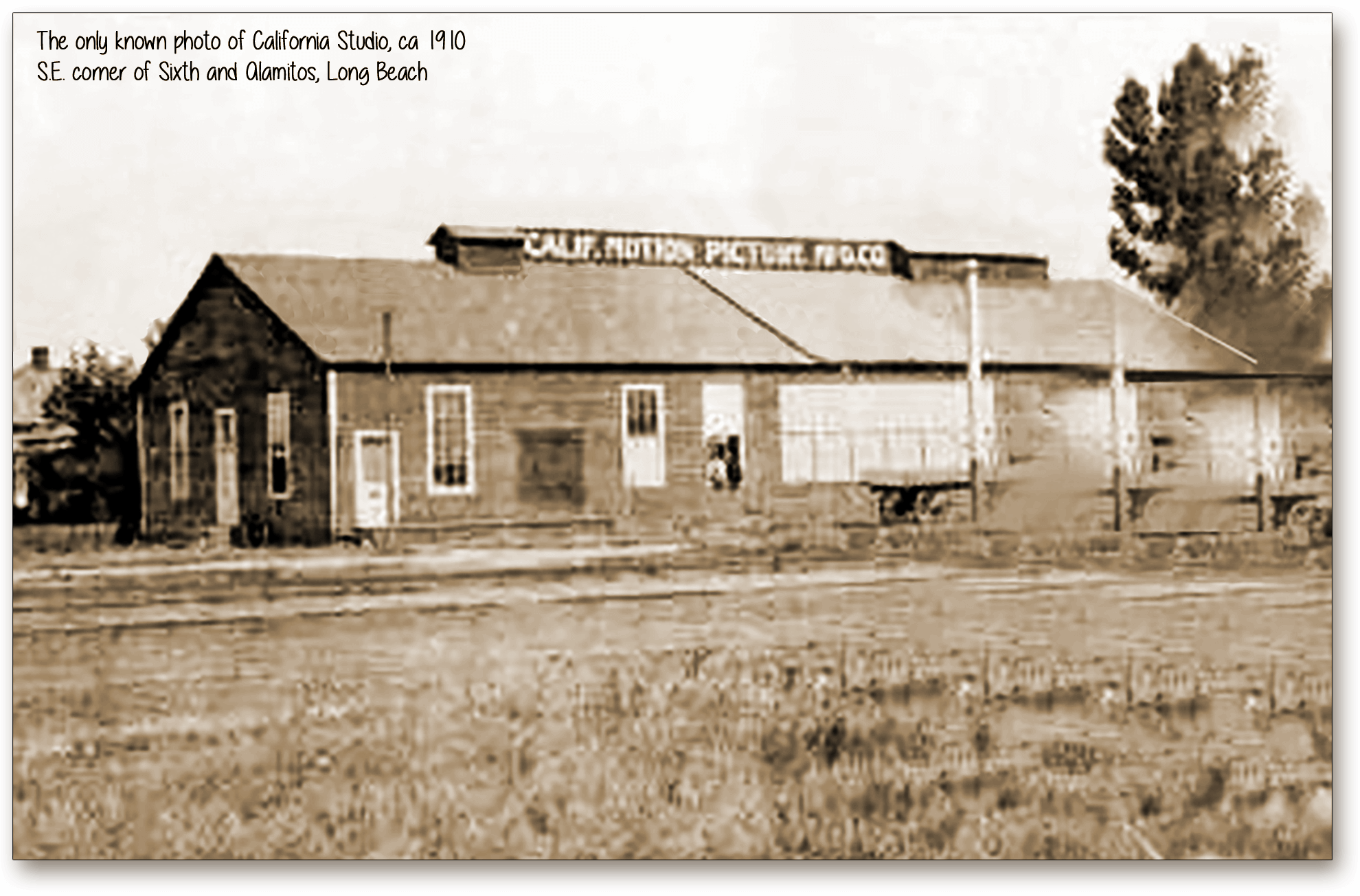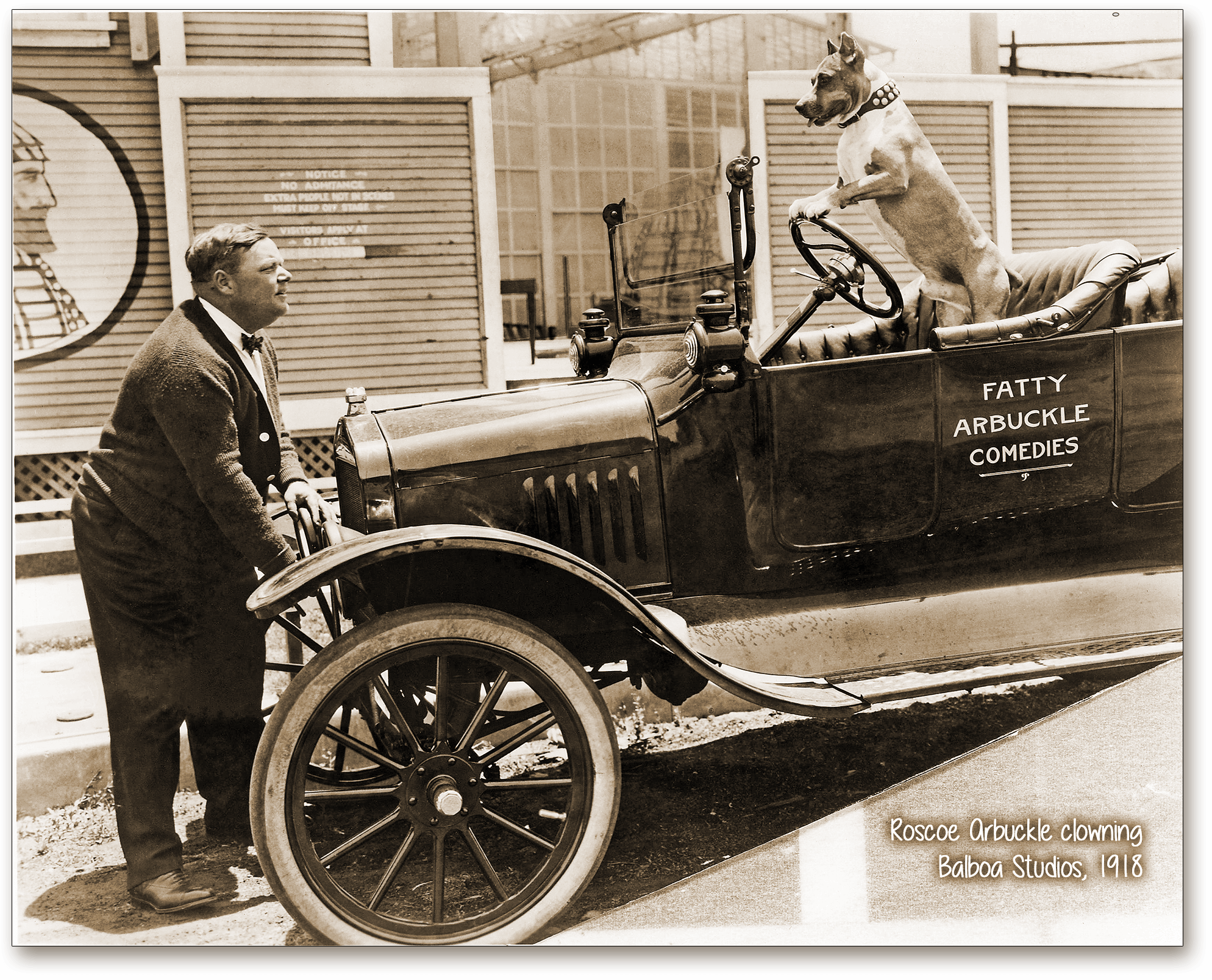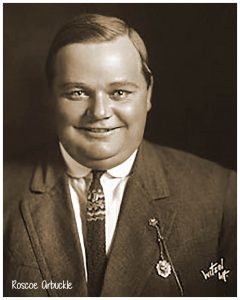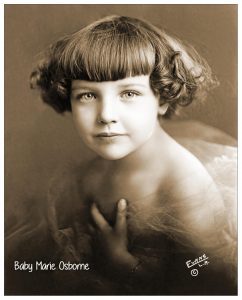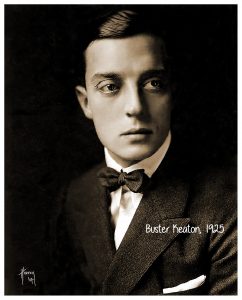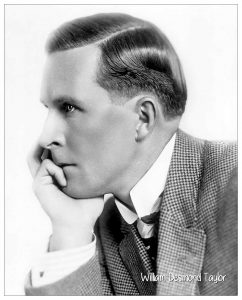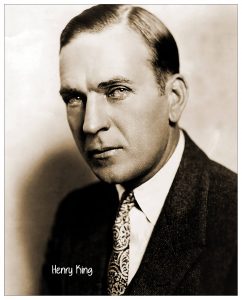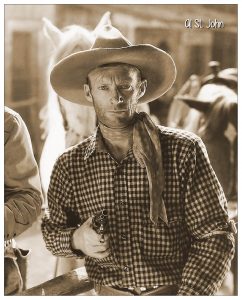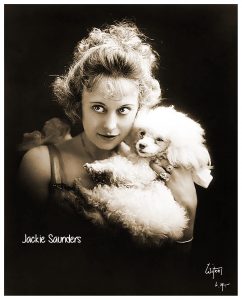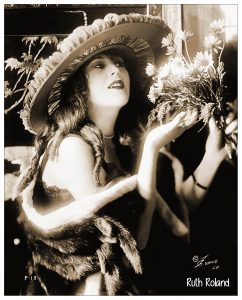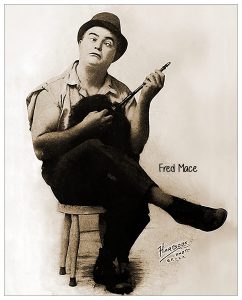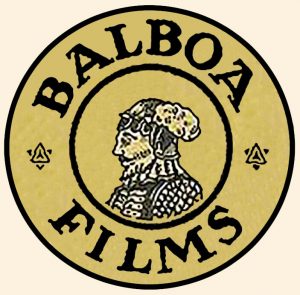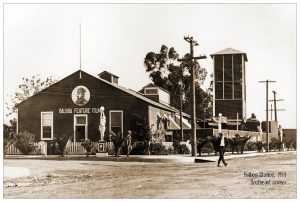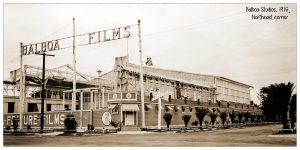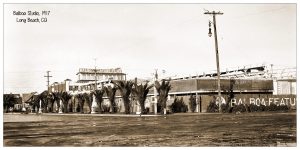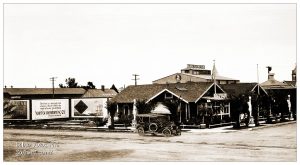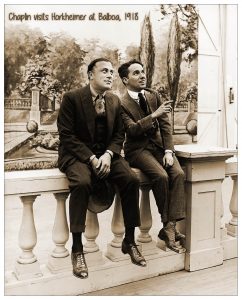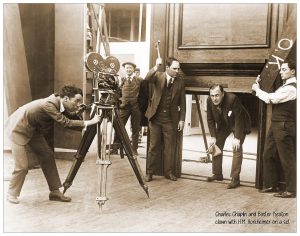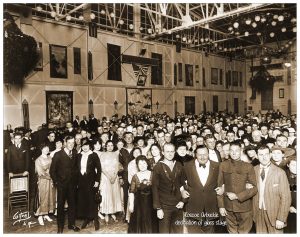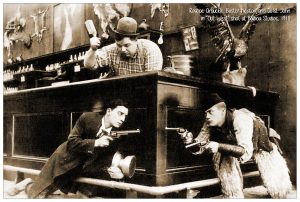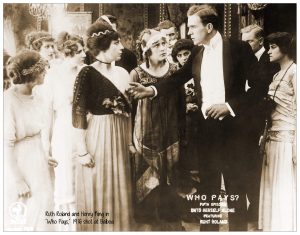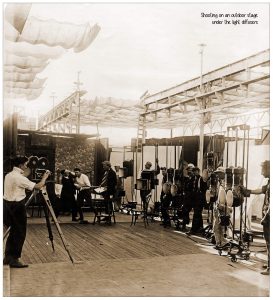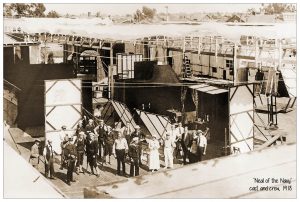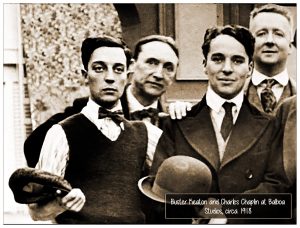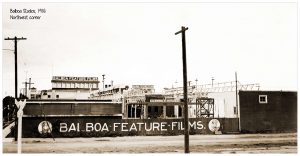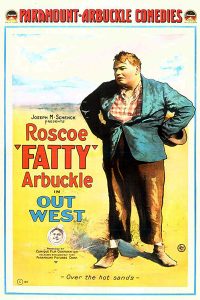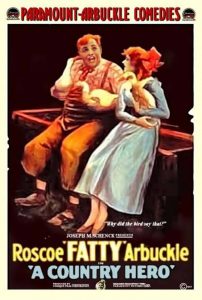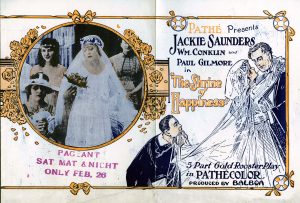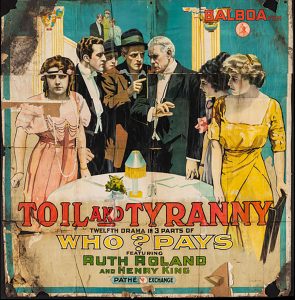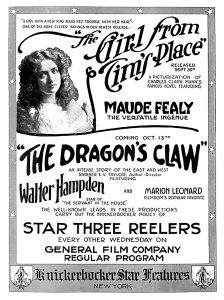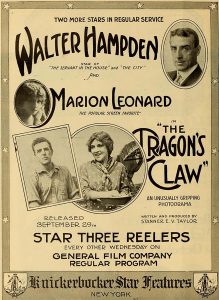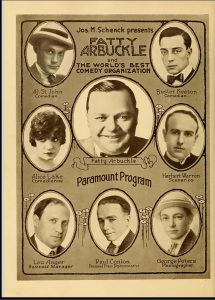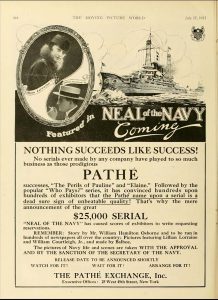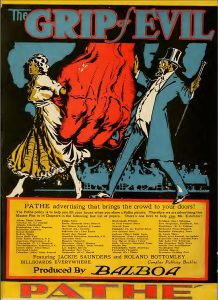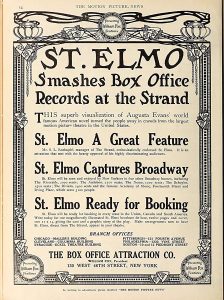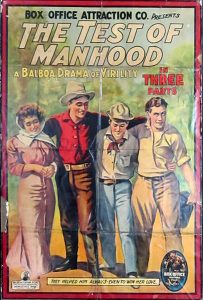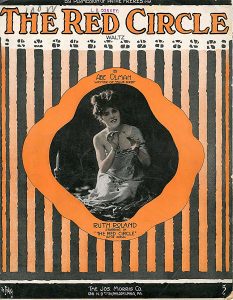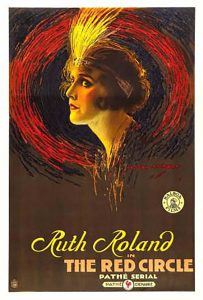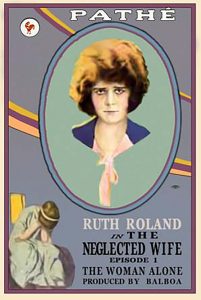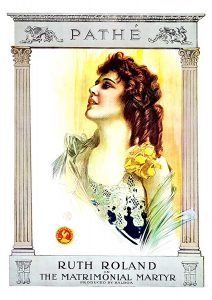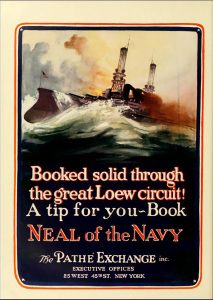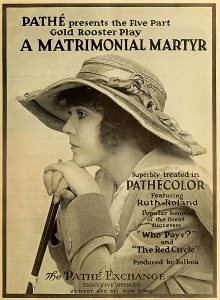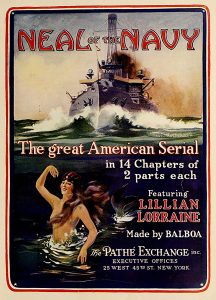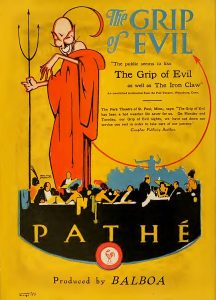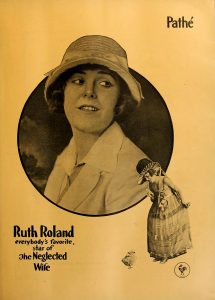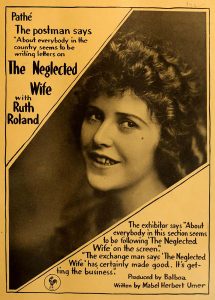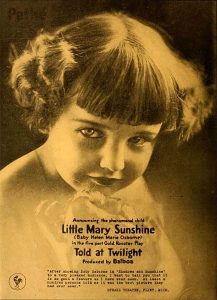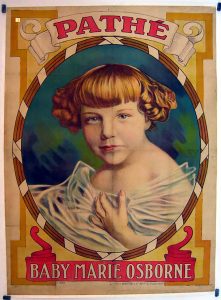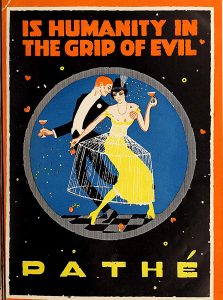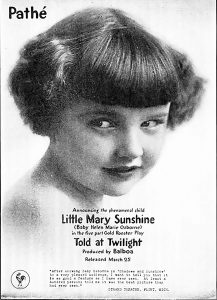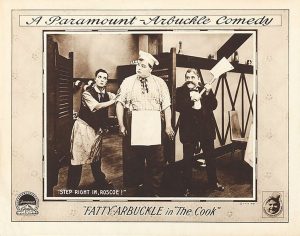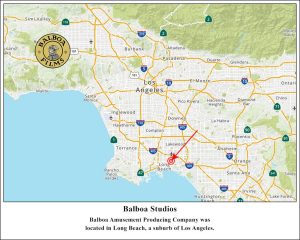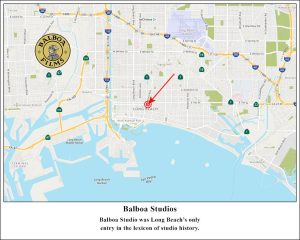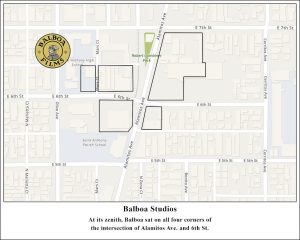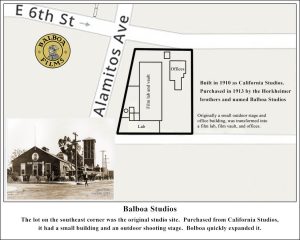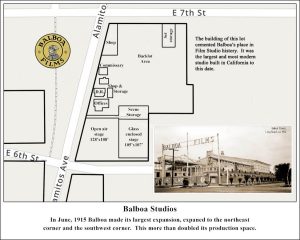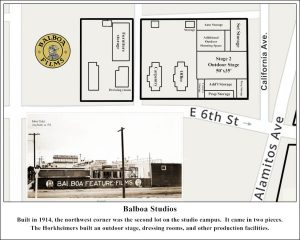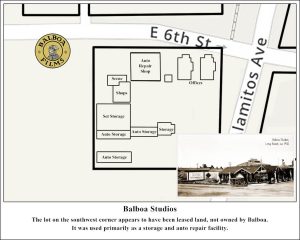Balboa Films
The first studio founded in California...by California owners
And Long Beach's only entry in the studio history lexicon
Photo courtesy of Marc Wanamaker / Bison Archives Click to enlarge
Related Pages:
California Studios
The first studio built in California by California owners was California Studio. It was built in 1910 and leased to Thomas Edison as his first and only California studio, before being bought by the Horkheimers for their Balboa Studios.
Edison Company comes to Long Beach
During 1912 California Studio ceased its own production. In January, 1913, though he never stepped foot in Long Beach, Thomas Edison sent a unit of his Edison Motion Picture Company, headquartered in The Bronx, NY, to lease the tiny studio from its owners. It was Edison's only foray to the west coast to open a branch. He never came back.
Under California's ownership, a small barn-like structure was built. Edison quickly improved the studio by enlarging and improving the building for indoor shooting, business offices, dressing rooms, a carpentry shop, a property shop, and a film processing lab. Edison also built an outdoor shooting stage that measured 75 feet x 25 feet.
Apparently Edison did not like the west coast. It is not known exactly when Edison left the studio, but he moved out before the year was out. The Edison tenancy was short-lived, but he greatly expanded the studio's production capacity on the half-acre lot.
Balboa Amusement Producing Company
When Herbert Morris (known professionally as H.M.) Horkheimer, a native of Wheeling, West Virginia, with the blessing of the family, used the $7,000.00 his father left them to go into the movie-making business. The half-acre studio he bought in April of 1913 was little more than a building where business was conducted, and an outdoor shooting platform. The former California Studio stood on the southeast corner of Alamitos Ave. and E. 6th St. in downtown Long Beach. Horkheimer, a theatrical producer, saw opportunities in the movie business to make a lot of money, and he plunged in. He was the youngest mogul in the fledgling movie industry, only 30 years of age.
Horkheimer's under funded shoestring outfit began with a single director, veteran Fred Mace, 6 actors, and 6 crew and office employees. He would call his fledgling company Balboa Amusement Producing Company and his logo would be a rendering of famous explorer Vasco Núñez de Balboa. The studio became known simply as Balboa Studios.
Photo courtesy of Marc Wanamaker / Bison Archives
Click to enlarge
East 6th St. and Alamitos Ave., Long Beach, CA
Studio active 1910-1925
California Studio active 1910-1913
Thomas Edison Studio active 1913
Balboa Studios active 1913-1918
Creditor owned rental lot active 1918-1925
Inception: California Studio
Built in 1910 by California Motion Picture Manufacturing Company, incorporated Oct. 15,1910, they branded the location as California Studios. The owners made an extensive search with the help of the local Chamber of Commerce and finally settled on a small half acre lot on the southeast corner of 6th St. and Alamitos Ave., in what would later become the heart of downtown Long Beach. Production began in earnest on Feb. 15,1911. The company initially turned out newsreel type promotions for Long Beach and industrial films, and rented its facilities to other movie makers.
This studio is cemented in in film history two ways. 1) It was the first company and studio conceived and born entirely in California. All other to that time moved from the east. And 2) it still remains as Long Beach's only studio location...ever.
Unfortunately California Studio only lasted a short time and was out of business by 1913. But its small studio still stood, just waiting for someone to use it.
click to enlarge
Using a $7,000 inheritance from his father, 30 year old Herbert Morris (H.M.) Horkheimer founded what would be the world's most productive movie producing company of its day. Within a year H.M, brought on board his older brother, Elwood (E.D.) to help manage the business. Forgotten to history, these men were giants in their day.
Click to enlarge
Over the next couple of years Hornkheimer's and Balboa's fortunes would radically change. Horkheimer would create the largest, most modern, and most productive studio of its day. It would eventually occupy all four corners of the intersection and would include an 11 acre backlot at roughly where Alamitos Ave. and Orange Ave come together in Signal Hill, a short drive away.
But before he could settle in at his new lot, he had to wait for the Edison Company to wrap up their shooting and move out, then start some needed construction to bring the studio up to what Horkheimer felt he needed.
Meanwhile, anxious to get started he rented space at the Harry Revier studio (later Famous Players-Lasky, the precursor to Paramount Pictures) at the corner of Selma and Vine Streets in Hollywood. There he shot a few comedies. Fred Mace took his shooting unit to the Thanhouser studio at 651 Fairview in East Los Angeles.
It took several months to get the studio ready for shooting. Horkheimer found his $7,000 did not stretch very far and he was soon over budget and stretched thin.
Later in 1913, Horkheimer was joined by his older brother, Elwood. The family partnership also included their sister, Florence.
Jack London, Hobart Bosworth, and the Lawsuit
In April of 1913, even before production had started for the Balboa Amusement Producing Company at the Long Beach studio, H.M. Horkheimer signed a contacted with popular writer and adventurer, Jack London, to produce screen versions of his novels.
Work immediately began on bringing two novels to the screen, but in October London presented Balboa with a copyright infringement lawsuit. London decided he would rather have his friend and Balboa competitor, Hobart Bosworth, have exclusive rights to turn his novels into films. Horkheimer claimed he had a signed contract with London. This was apparently true. London's claim was that he could break the contract with Balboa and give a new contract to whomever he chose, as he held the copyright on the work. Balboa argued what we now call "fair use" and London argued copyright infringement law. Copyright infringement law won and cost Balboa not only the expenses already incurred during the production, but future potential earnings, and a loss of prestige in the business.
The problem for Horkheimer and Balboa, it appears, is that he hired a copyright attorney to defend them instead of a contract attorney. Under contract law, he might have won.
The result was a landmark decision, changing in the way copyright law was enforced giving advantages not already in law to copyright holders. This suit changed the very nature of the relationships between copyright holders and the people they contracted with.
(editorial.: The result also showed London's lack of integrity.)
Production of other movies continued in earnest at the studio, however, financial recovery took many years, and in fact, it crippled Horkheimer's ability to make the pictures he wanted. In spite of that, Balboa went on to make over a thousand movies during its five-year history and was the most productive studio company of the era.
At the same time as the purchase of the northeast corner, the nearly 1 acre log on the southwest corner, was leased. It served primarily as office and storage had a studio auto repair shop.
The Balboa Heyday
From 1914 through 1917 Balboa experience spectacular growth and success. In spite of the Jack London law suit Balboa was as profitable as any early company, and more profitable than most. The Horkheimers put their profits right back into increasing production and production capacity.
Balboa bread and butter were very quick and cheap one and two reeler comedies and westerns, and "chapter pictures" (what we now call "serials"). The advantage of the chapter play was that they brought patrons into the theater week after week until the story came to an end. The public loved the Balboa movies, and among the most popular were "Neal of the Navy" and "Who Pays?" distributed by Pathé . Ruth Roland, the "Queen of the Serials" was a main reason for Balboa's success. Their youngest star, Baby Marie Osborne, was also in some of Balboa's most popular movies.
One of their most popular films was 1914's "St. Elmo," which broke box office records in New York. It was distributed by William Fox's Box Office Attractions, which he formed before actually entering the production side of the business. The Horkheimers' relationship with Fox began in January 1914 and lasted most of the year, during which time Fox bought Balboa's entire output of film. This was an unusual arrangement, as the two young companies, for the time being, were exclusive to one another.
In December of 1914 Balboa added a new distributor the Pathé Frères (Pathé Brothers), for the exclusive distribution of its serials. Pathé, a large French production company decided to enter the American market as a distribution company, and then went into American production of their own. Their quality standards made it necessary for Balboa to often re-shoot portions of their movies. They distributed all of the serial chapter photo plays that Balboa produced.
Photo courtesy of Marc Wanamaker / Bison Archives Click to enlarge
Stars Who Passed Through Balboa Films Studio
Many people passed through the halls of the Balboa Amusement Producing Company's movie studio. Many were famous at the time and their stars set, while others were not yet stars but rose after they left Balboa. Some you may have heard of, many you may not have. All are worthy of remembering. Hwew are just a few. (Photo of Baby Marie courtesy of Marc Wanamaker / Bison Archives)
By ealy 1914 Balboa expands across the street
By mid 1913, H.M. Horkheimer was joined by his brother Elwood D. Horkheimer as a full partner and by early 1914, according to Sanborn Maps of the era, the Horkheimers expanded the studio to the land on northwest corner of 6th St. and Alamitos Ave. (actually 6th and California St. See maps section). They added a 100 x 50 outdoor stage to the 1.25 acre space, more than doubling its production area. Additionally they built dressing rooms, a carpentry shop, a property room, offices, and plenty of storage space.
In 1915 Balboa expanded to the northeast corner
In June, 1915 (according to Moving Picture World, July 15, 1915) Balboa added another 8,000 of stage space, plus more dressing rooms and scene storage. They built a new 128' x 108' outdoor stage and 135' x 107' indoor stage with dressing rooms and rudimentary air conditioning on the roughly 5 acre site on the northeast corner of the intersection, more than tripling its production area.
Five directors could work simultaneously without running into each other. They also built a large carpentry shop and a two story scene storage shop, a camera vault, and several other buildings. This lot was their largest and most comprehensive. It was the most modern studio complex built at that time and was the envy of the industry. Many other movie makers visited and marveled at it. Several actually rented stage space at the studio, and many others considered it. Roscoe Arbuckle (known by the stage name "Fatty") became a tenant, and Charles Chaplin considered renting space while he built his own studio.
click to enlarge
1916 was a banner year at Balboa. Elwood negotiated a contact with Mutual Film to distribute six 5 chapter serials starring Jackie Saunders, Ms. Saunders was a popular serial actress who was known for doing her own stunts. She rivaled Ruth Roland for popularity. Later in 1916 Elwood and Jackie tied the knot.
They boasted one of the largest and most modern movie making plants of the early silent era, employing between 250 and 500 people at any given point. They were Long Beach's largest employer. They had two glass stages, 2 outdoor stages, a small backlot on site and a large, 11 acre backlot in Signal Hill.
In the spring of 1917 Roscoe Arubckle (known professionally as "Fatty") decided to bring his Comique Comedies film company, which included Buster Keaton, to Balboa, who agreed to build him a big, new glass enclosed stage which measured 100' x' 200'. Filming began in earnest in February of 1918. The news spread quickly, as Arbuckle was a huge star. Even Charles Chaplin came by to look at the studio. He even considered relocating his production at Balboa, but instead deciding to build his own studio. Arbuckle shot 6 films at the Balboa studio.
Among Balboa's stock of players were two other major stars. Ruth Roland was know as the Queen of Serials" and Baby Marie Osborne was the first child actor to achieve big fame. Both worked for Balboa when their fame was at their height.
Balboa's Stars and Directors
Among the many stars who called Balboa home, the biggest was Baby Marie Osborne, who as a toddler, had many of Balboa's biggest hits and was their highest paid star until her parents pulled her from the studio to start one of their own (which did not have success).
Though not on the Balboa payroll, it's biggest tenant was comedy star Roscoe "Fatty" Arbuckle's Comique Film Corp. Arbuckle brought his team of performers with him. This included popular comedian Al "Fuzzy" St. John, Arbuckle’s cousin, and Buster Keaton, Arbuckle's best friend who would rise to become a Hollywood legend. Arbuckle was the biggest name in film comedy at the time. Though he never had a studio of his own, he marched his troupe all over the country renting studios here and there to produce his comedies. He made six films while based at the Balboa plant.
Other famous Balboa personalities include Fred Mace, Jackie Saunders, Lew Cody, Ruth Roland, William Desmond Taylor, Pearl White, Henry King, Alice Lake, Minta Durfee, Dorothy Davenport and major star Henry B. Walthall.
Fate steps in and catches up with H.M. and Elwood
1918 was the year. As went Balboa, so went many of the early studios, for many of the same reasons. No matter how modern and solid the studio was, the business itself was always a house of cards. One by one the cards were knocked down until the entire house collapsed.
Like most of the early film companies, Balboa's fortunes turned on their relationships with the distributing companies and their ability to find theaters to play the movies. William Fox, under the Box Office Attractions brand was Balboa's initial distributor. Eventually, they added Pathé Frères.
Balboa produced their movies at such a great pace that money was always an issue trying to keep up production. They owed their suppliers money. They met payroll with money borrowed from local banks. Balboa always operated on razor-thin margins. The Horkheimers knew no other way to operate.
WWI started in 1914, and by 1916 not only was the movie business feeling the effect, but the entire globe was turning upside down. Movie distribution went into decline. The entire European market dried up. The war reduced European markets to near zero. Most movie companies depended on Europe to provide as much as 50% of their revenue. Even in the U.S. movie-going was in a decline.
Distributor Pathé can't sell the Balboa flood of films.
When their distributor, Pathé, asked them to slow production, they were not able to comply. Pathé simply had no outlets for the Balboa product. Like an Ocean Liner trying to make a turn, Balboa was unable to make the turn quickly enough. They had many films in production simultaneously, and had a backlog of movies ready to go out the door to the distributor and theaters. Pathé, in an effort to keep their own doors open, declined to distribute any more Balboa fare. Balboa had a huge payroll and their expenses were high. They were simply not able to change course before both the money and the credit ran out.
The Horkheimers hoped that distribution would eventually catch up with production. It never did.
This set of circumstances was common in the industry at this time. It led to the demise of many of the first wave of moving picture companies, and Balboa fell into this group. Even though Balboa was one of the largest, most efficient companies, like most of the other production companies of the era, they withered because they could not find enough outlets in time.
The war ended in 1918 but by that time it was too late for Balboa. It was the end of Long Beach's largest employer. Balboa Amusement Producing Company was taken over by its creditors on March 25, 1918. Along with many of the other early moviemakers, Balboa had made a huge mark in the business. During this period, the companies we now know as the industry giants were either still in their infancy or did not exist. Balboa had been a giant, making hundred of movies and had been the home to many early movie makers. While in existence, Balboa was the biggest and the best.
In 1918 Balboa Amusement Producing Company's owners, H.M., Elwood, and Florence Horkheimer, declared voluntary bankruptcy. Control of the studio passed to its receivers and creditors. Because the bankruptcy was voluntary, the Horkheimers retained technical ownership, but not control. This was done to try to manufacture a return to production by Balboa.
After Balboa, what now?
There were several attempts by individuals and companies to buy or lease the real estate and/or the studio. Everyone failed, except one: the northeast lot, the large one, which was broken up and sold as a bunch of small parcels to small businesses in 1918, shortly after the studio closed.
Producers set up shop and produced a movie or two, then abandoned the site. Many of them. Potential investors and buyers came and went. Offers were made and abandoned. Production started then stopped. More than a dozen attempts over the next five years. Something always got in the way of bringing the studio back into full production.
The creditors themselves made an attempt to resurrect the still usable studio. They reorganized their holdings, issued stock, and renamed it Long Beach Studios. The remaining assets, they reasoned, were still modern and in working shape. They attempted to revitalize it, but even that failed.
H.M. Horkheimer always hoped Balboa could make a comeback. He spent the intervening years trying to find a way back into the industry. He never did. Florence Horkheimer attempted to regain control for the family in 1923, but she failed in court.
In the end, Balboa Studio was demolished in 1925.


